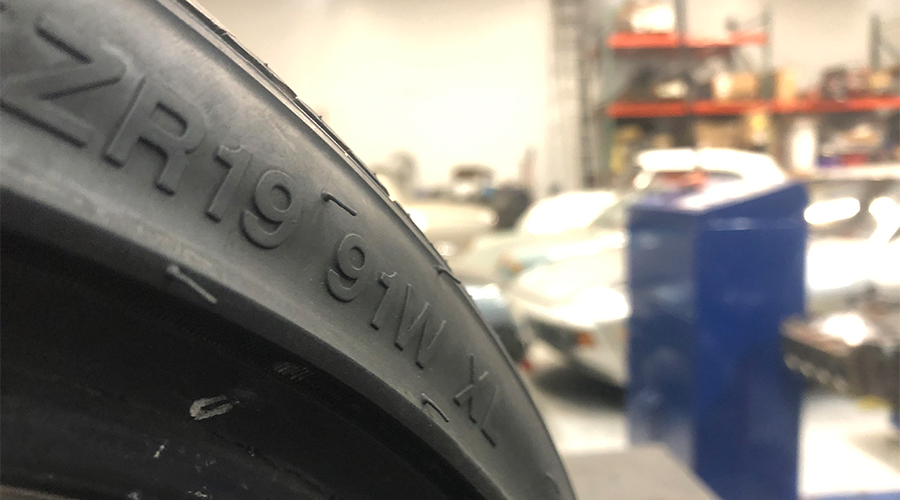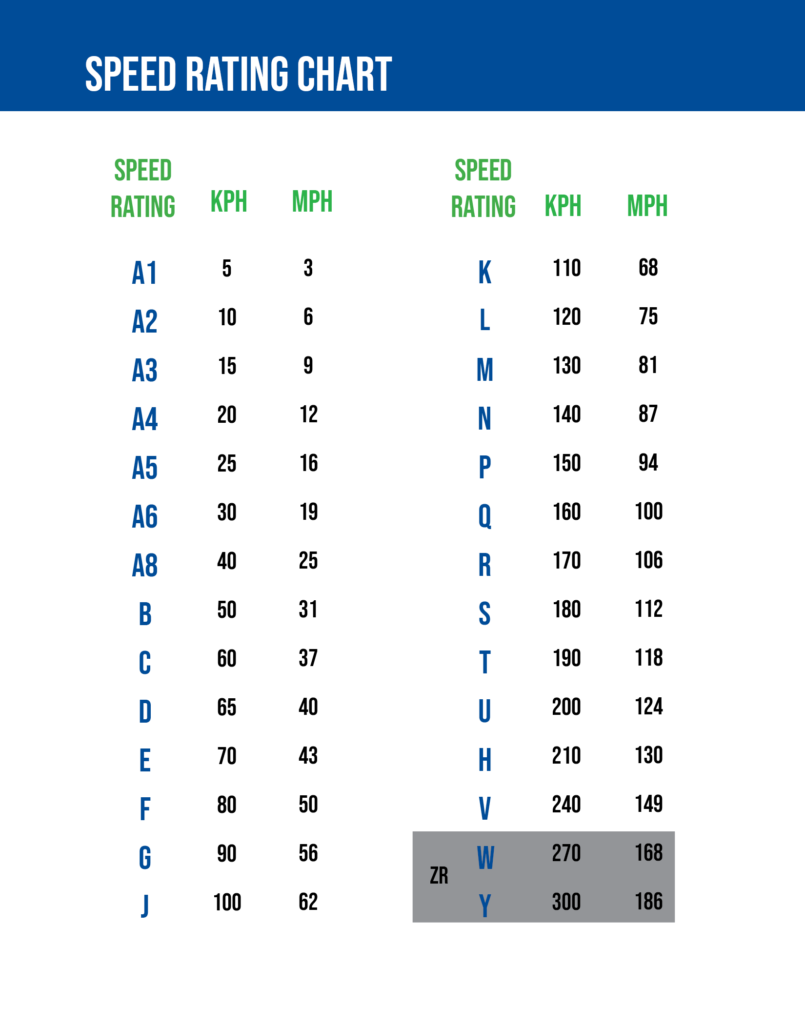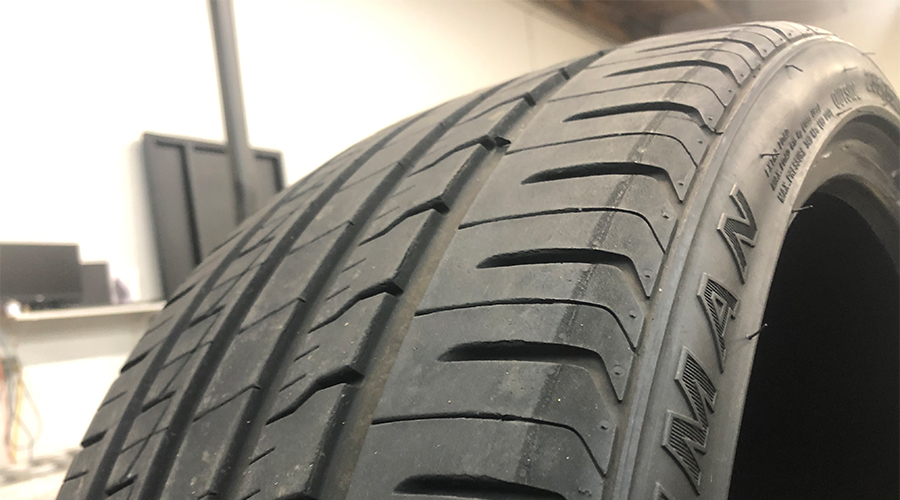What are Tire Speed and Load Ratings?
Molded into the sidewall of your tires is a series of numbers and letters indicating information like diameter, aspect ratio, tread width, and speed rating. The speed rating is expressed as a letter, a combination of letters, or a combination of letters and numbers. Load ratings are expressed as numbers between 70 and 126.
What does a tire speed rating mean?
The speed rating indicates the highest speed a tire can operate for a sustained period while carrying a load within its load index. A speed rating is not an indicator of the maximum speed a tire can go in a short burst.
Typically, the higher letter used in the speed rating means the tire can sustain higher speeds and heat levels. It is important to remember that tire testing is done in a controlled lab environment, and don’t factor in real-world variables like rough roads, cold weather, and wet or icy surfaces.
What is the tire load index?
Tire load rating indicates the amount of weight it can safely support. Combing the individual load rating of all tires on a vehicle will give you the total amount of weight it can support. It is important to pay attention to the load index of your tires, particularly on trucks or SUVs that haul heavy loads. The likelihood of exceeding the load index of a tire is much higher than the chance of going over the speed rating.

How to read the speed rating and load index.
The speed rating and load index can be found together on the sidewall of your tire, usually after the tire dimensions. The load index number is first, followed by the tire speed rating.

How do tires get speed-rated?
The procedure for the ECE (Economic Commission for Europe) tire speed determines the maximum speed a tire can safely operate at for an extended time under load.
- The tire is mounted to a wheel and put on a machine that simulates 80% of its load index.
- The test room is kept at a temperature between 68 and 86 degrees.
- The tire is rotated for 10-minute intervals at increasing speeds until the maximum speed is reached.
- Once the maximum speed is reached, it is held for 20 minutes.
- The tire is removed and inspected for damage and wear.
What tire speed rating do I need on my car?
The tires that come on your car from the factory should be the baseline for the speed rating you should get in the future. The factory rated tire is safe for your vehicle’s capabilities, and a lower-rated tire could be dangerous. However, you can move to a higher speed-rated tire without concern. Remember, if you have tires with different speed ratings, do not exceed the maximum speed of the lowest rated tire.
What’s the benefit of a higher speed-rated tire?
Higher speed-rated tires can have a stiffer sidewall, and marginally impact the stiffness of your vehicle’s ride. In general, the design of the tire will have a bigger impact on on-road feel than the speed rating.
For example, tires with speed ratings in the ZR range (W, Y) are oriented toward high performance. Tires of this caliber are designed to handle the abuse of performance vehicles and track driving. Any notable difference can be attributed to the design of the tire rather than its speed rating.

Matson Point S is your destination for tires
Have more questions about speed ratings? Need advice on tires? Give us a call and talk to one of our friendly service advisors, or schedule an appointment today! We are the Salt Lake valleys tire experts.
